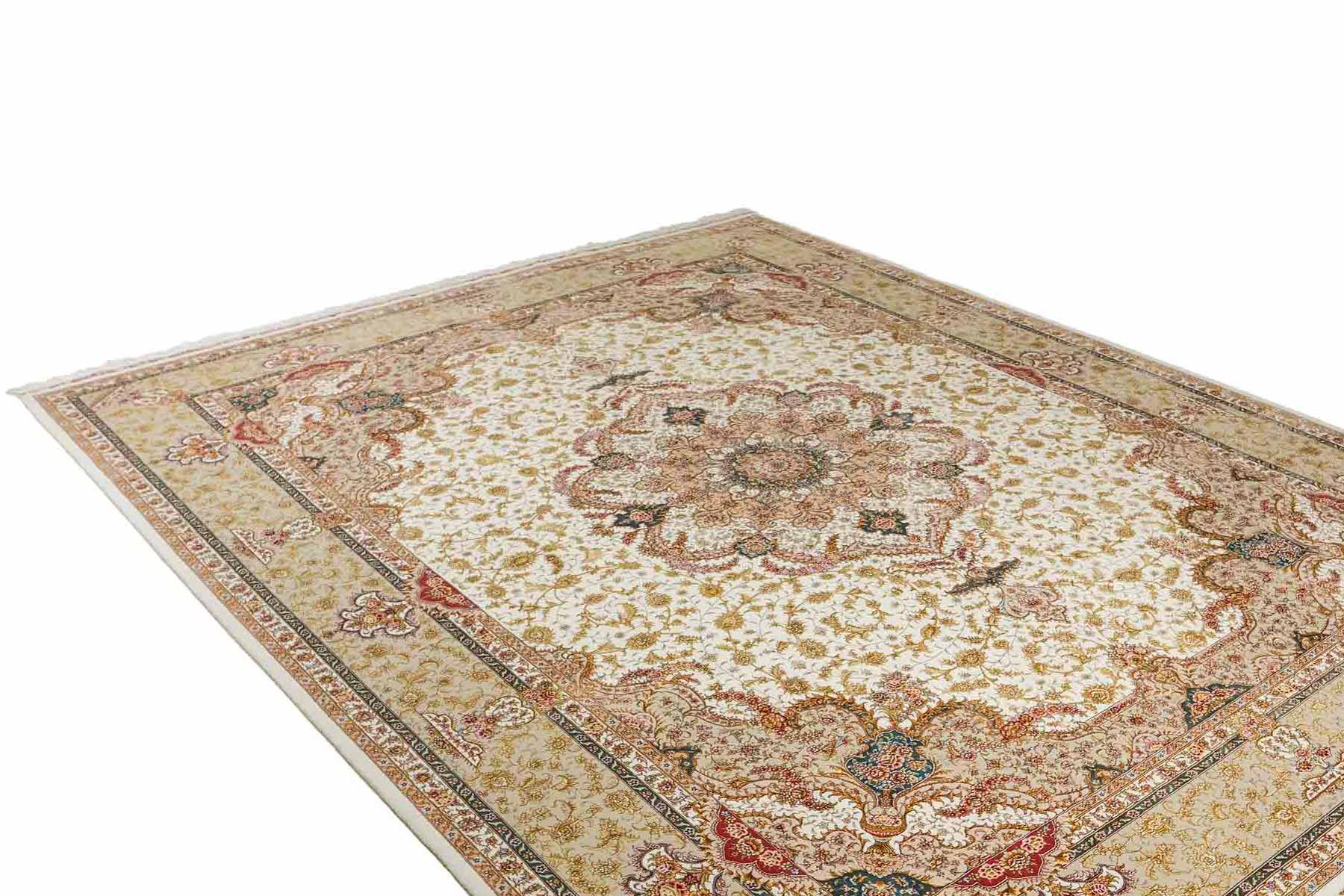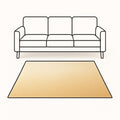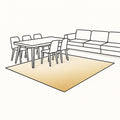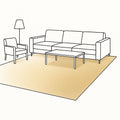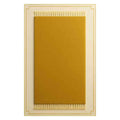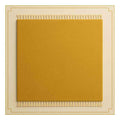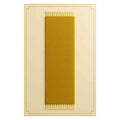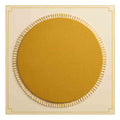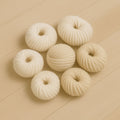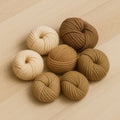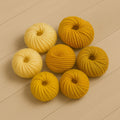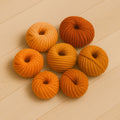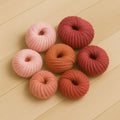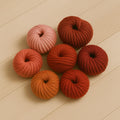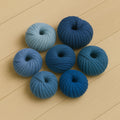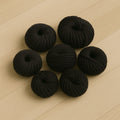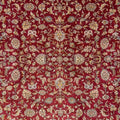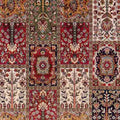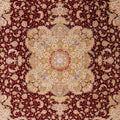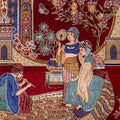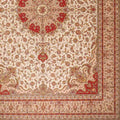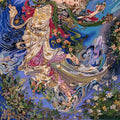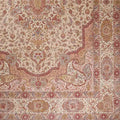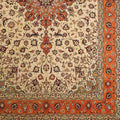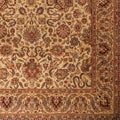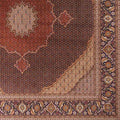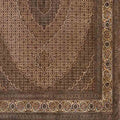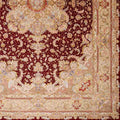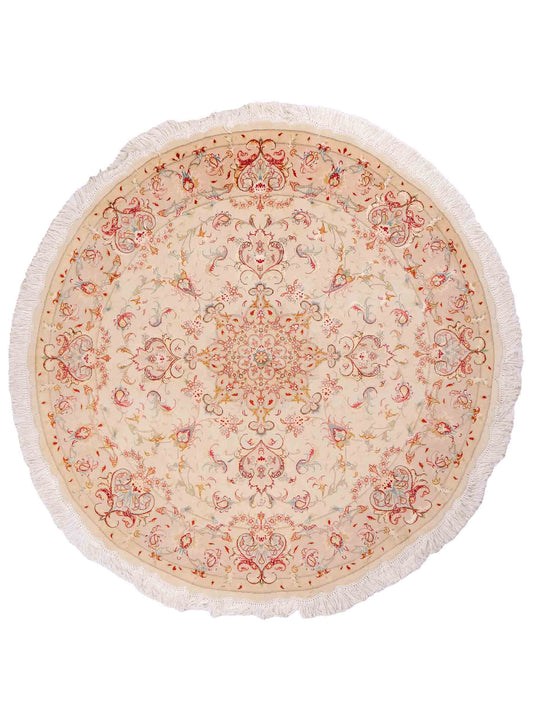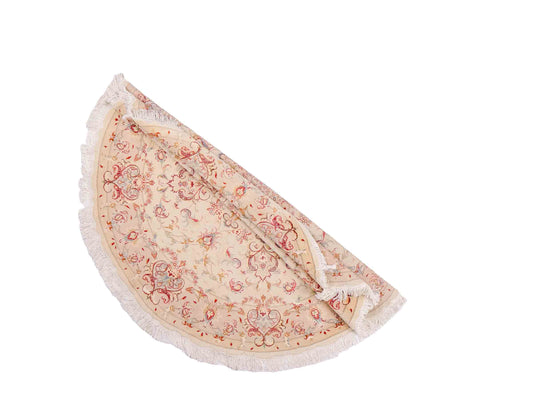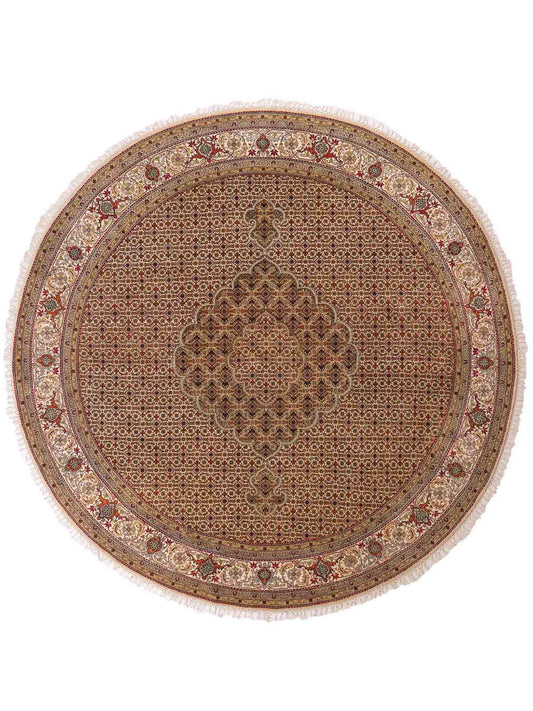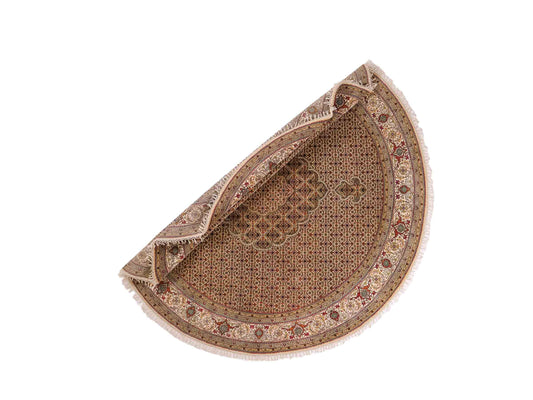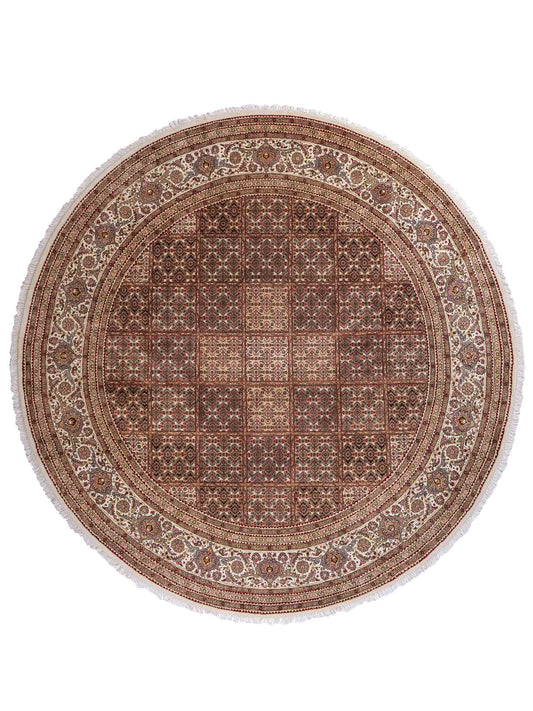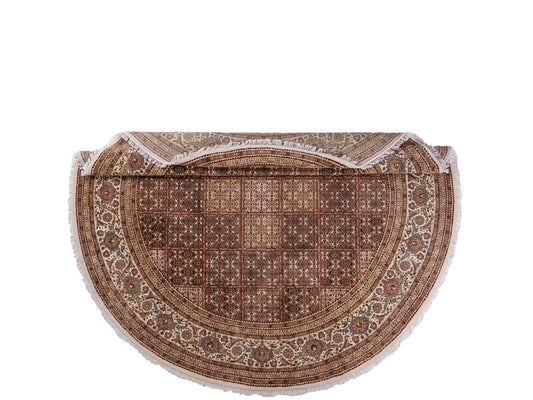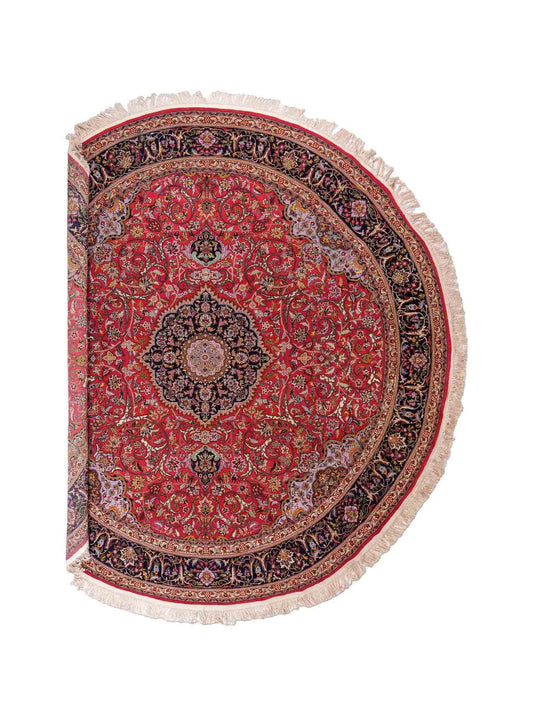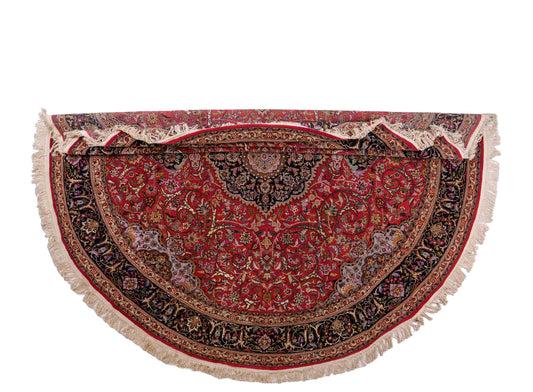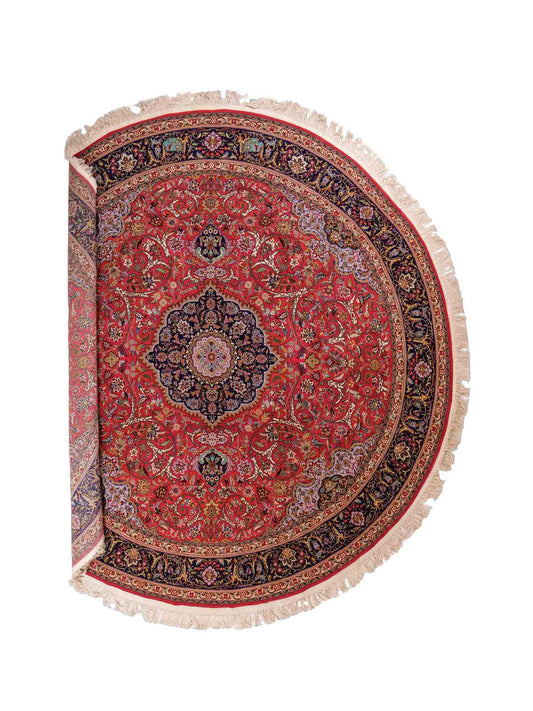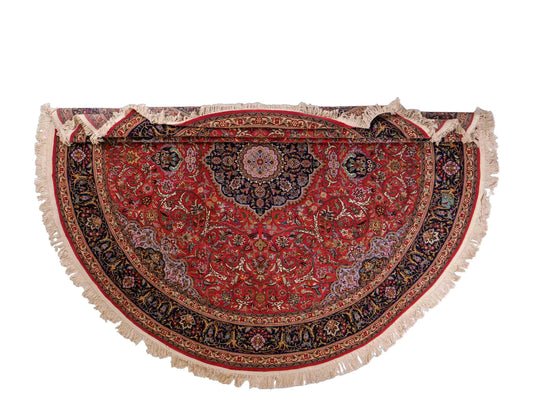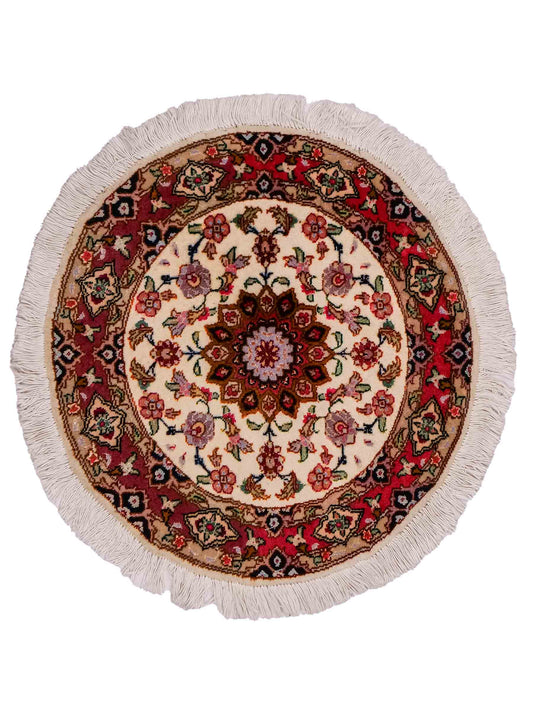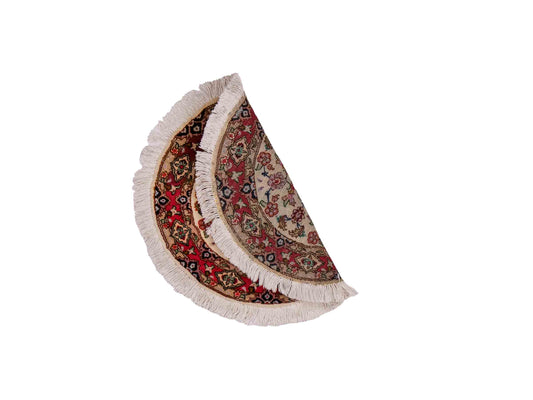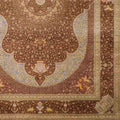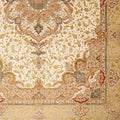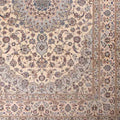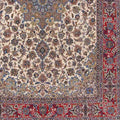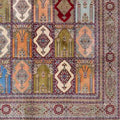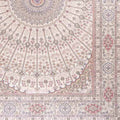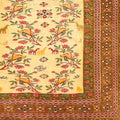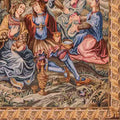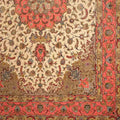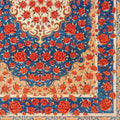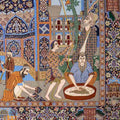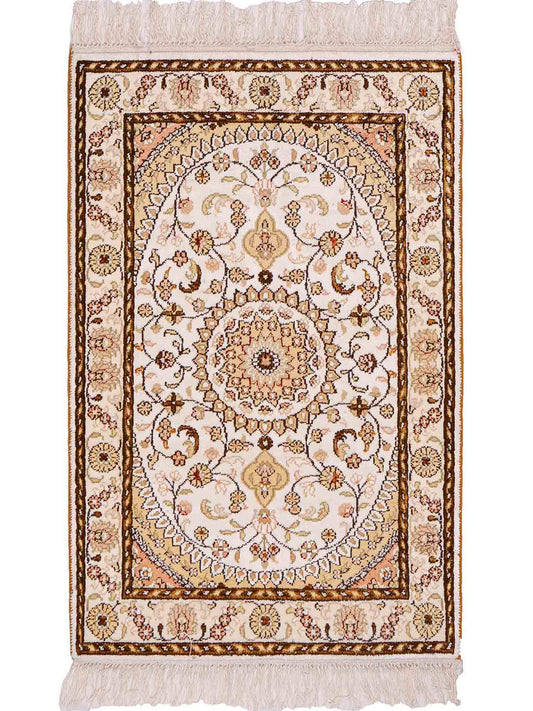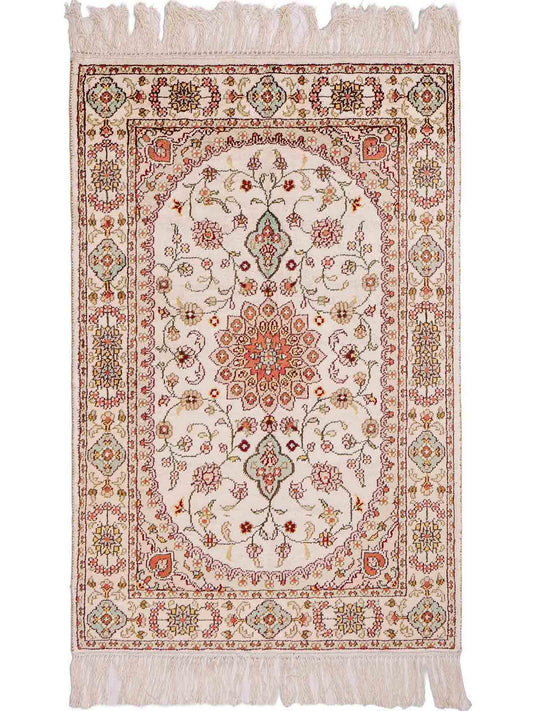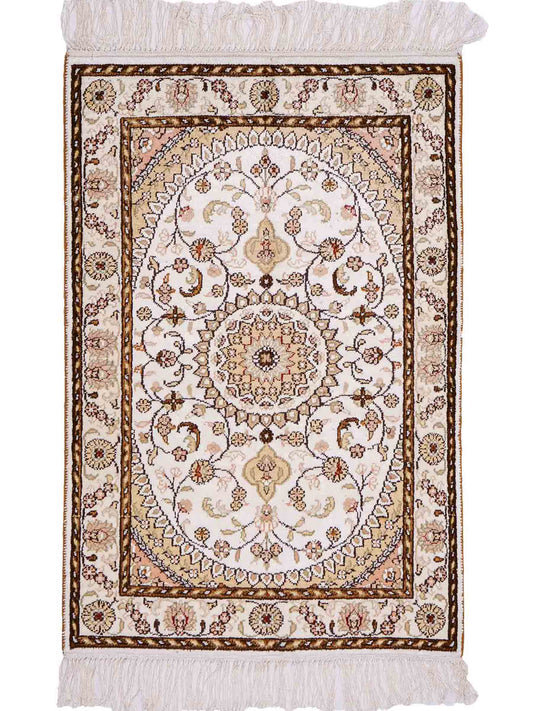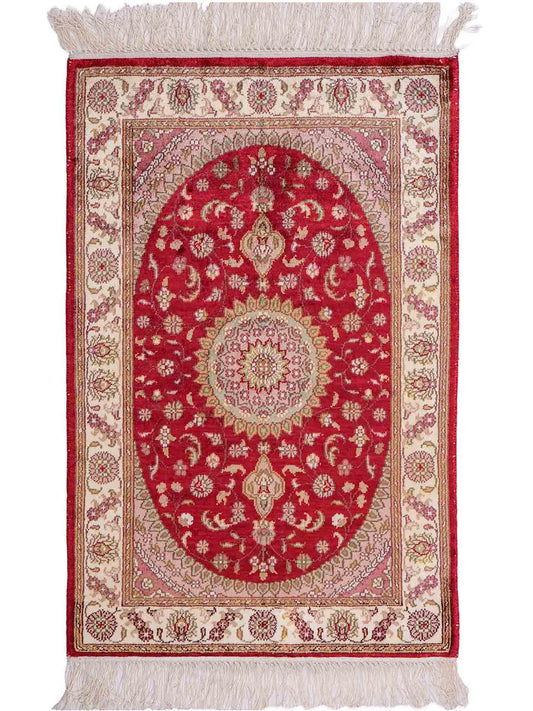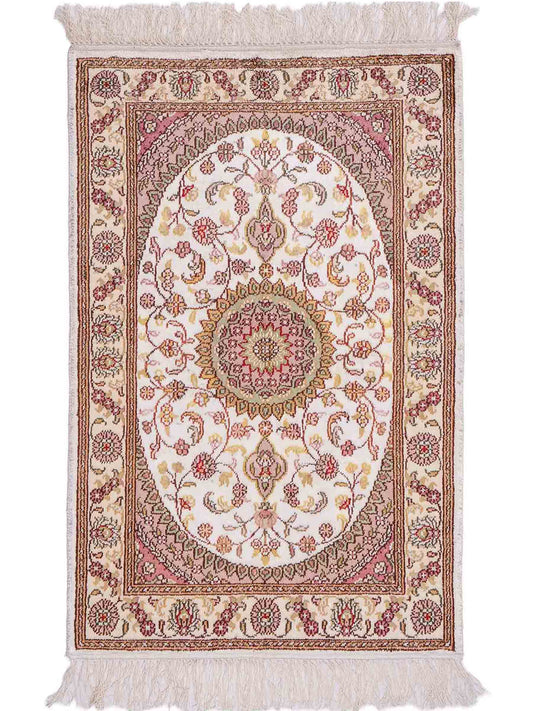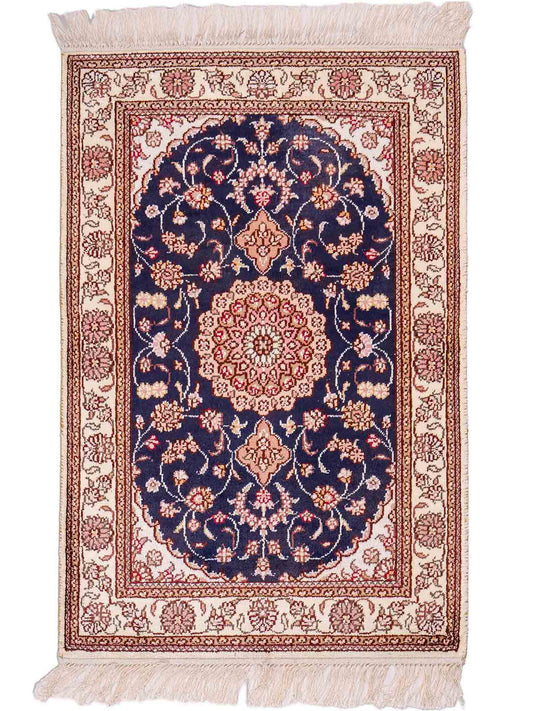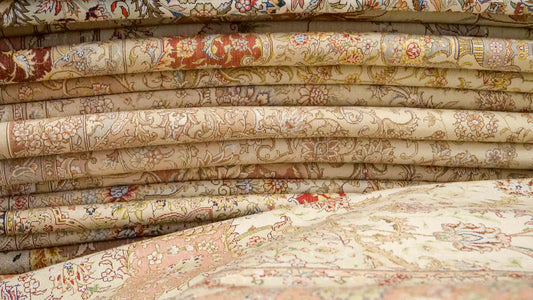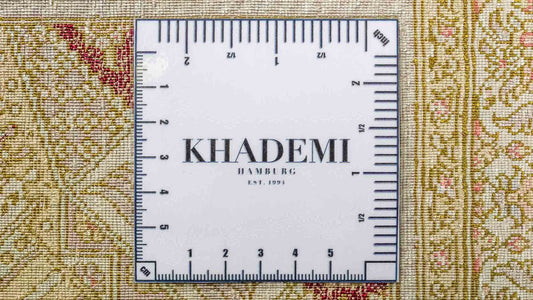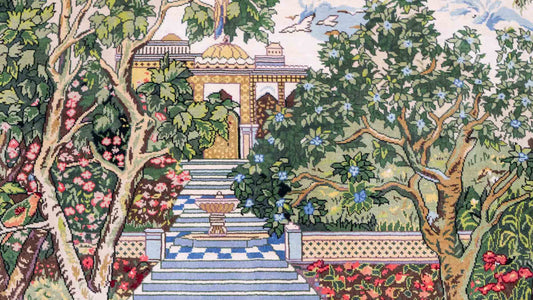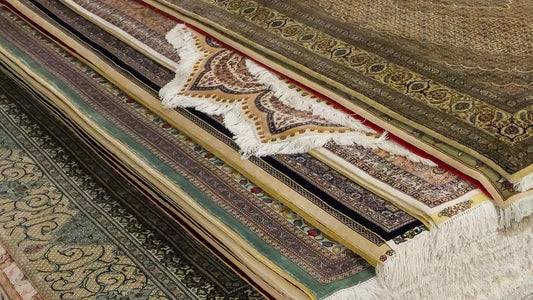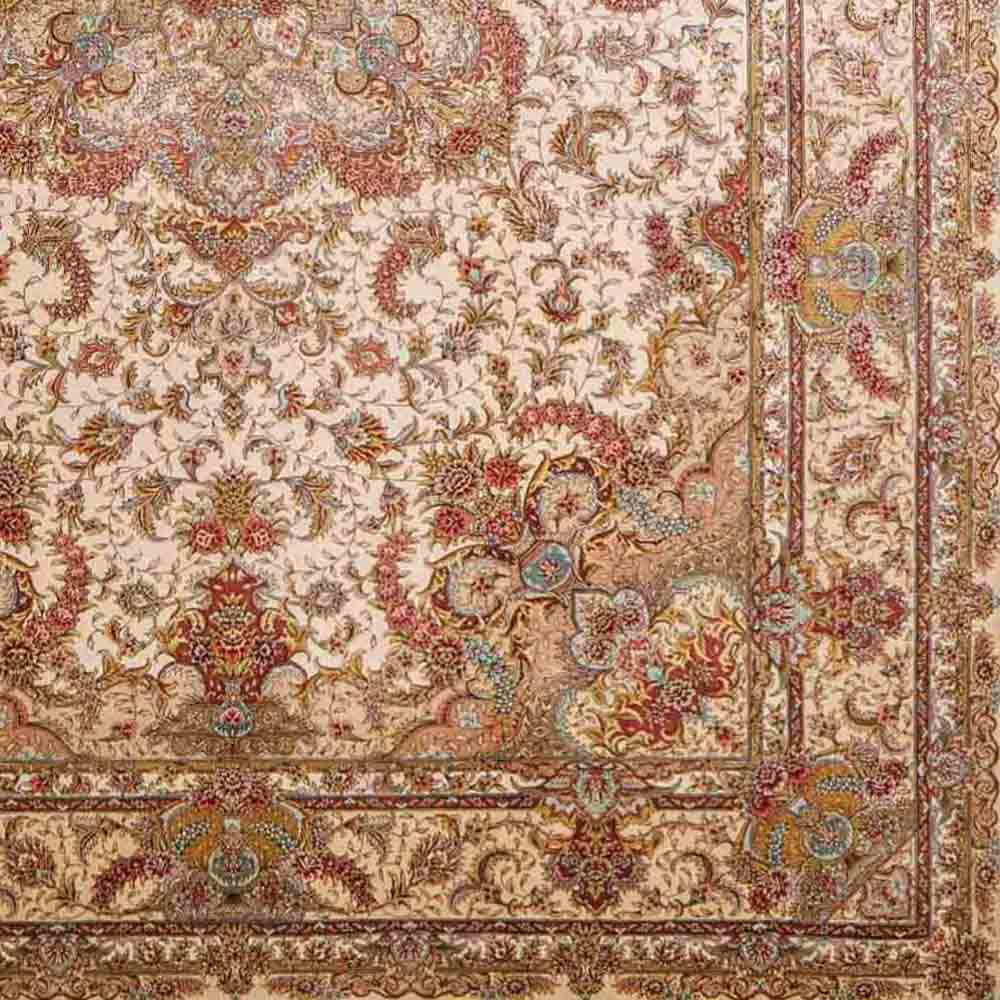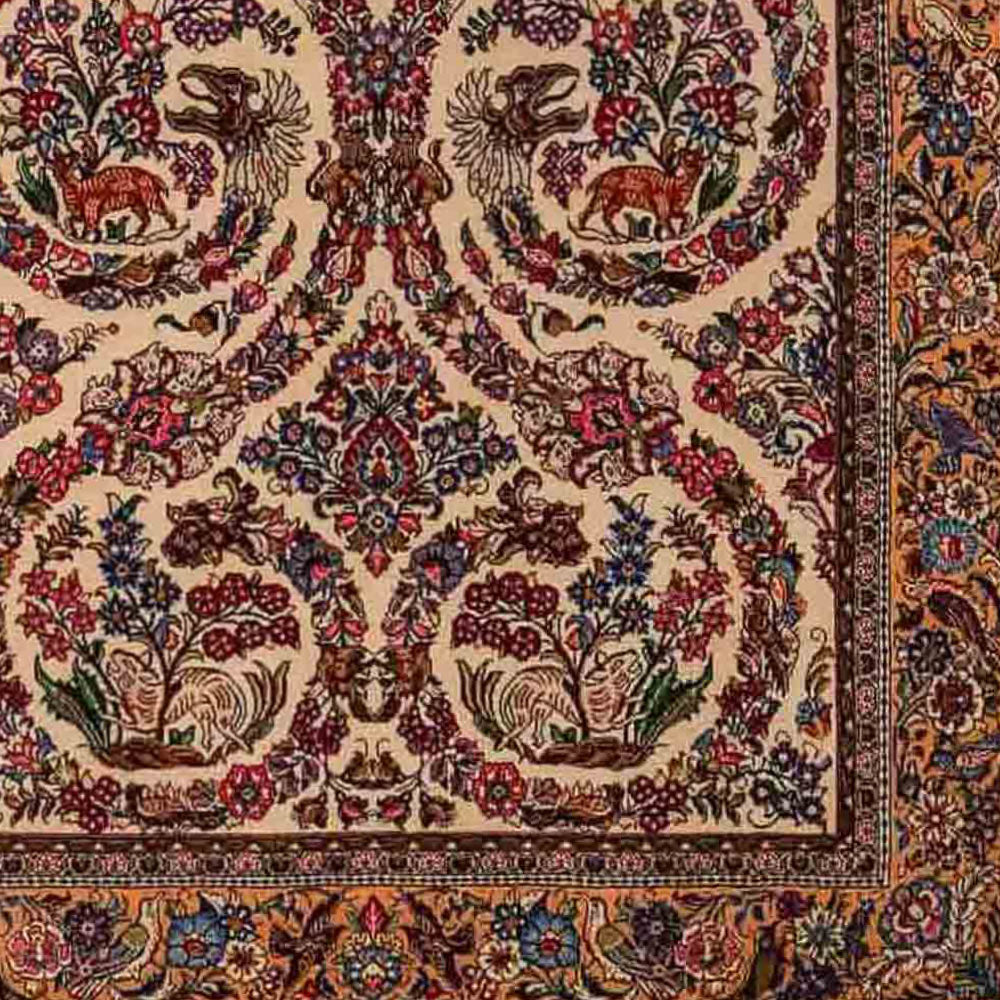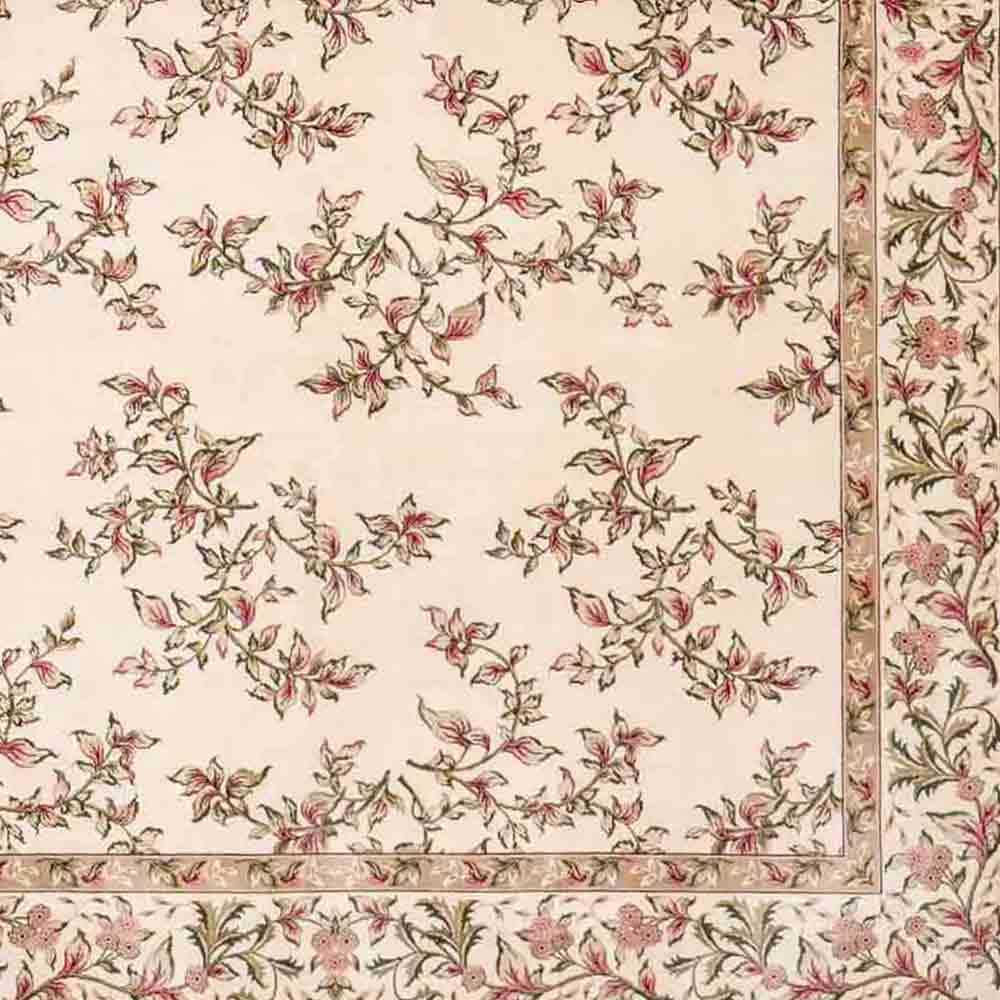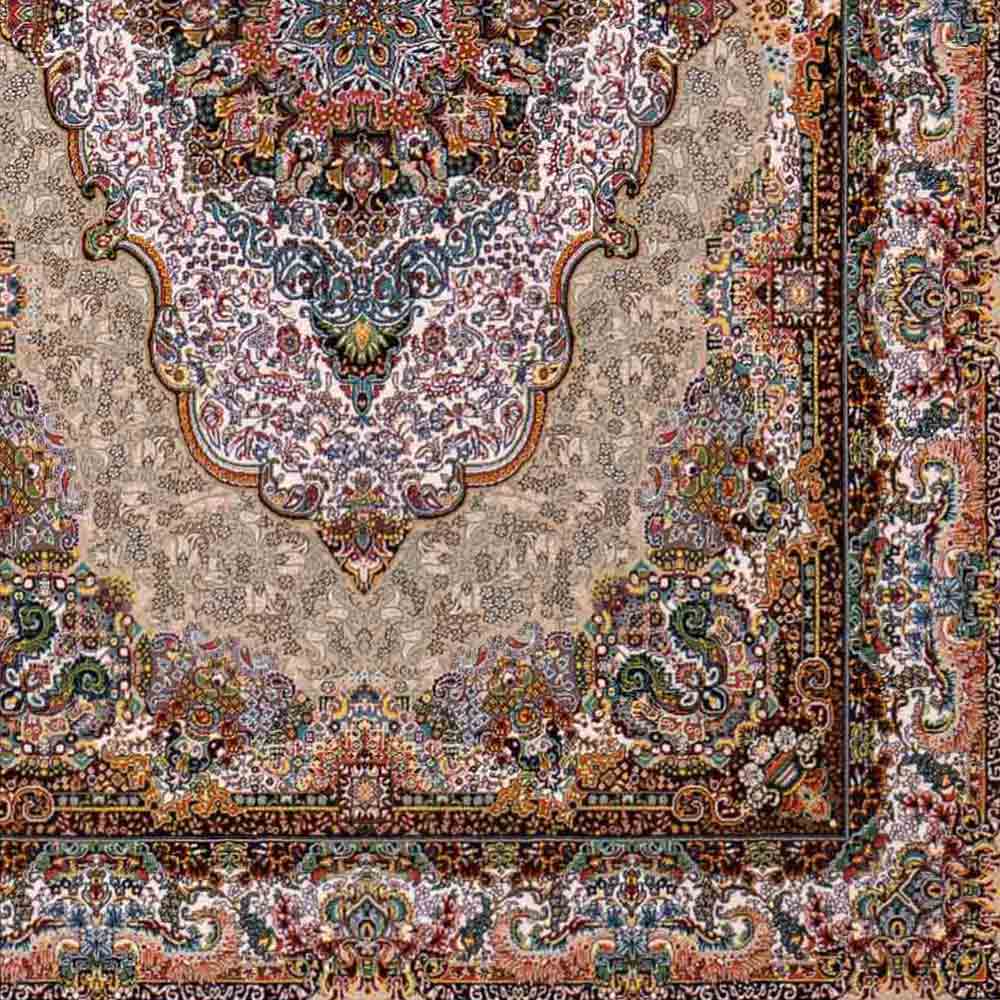Origin, Materials & Craftsmanship – What Sets Tabriz Rugs Apart?
Tabriz boasts a long-standing tradition as a cultural crossroads between East and West. These rugs are hand-knotted predominantly from fine, long-staple sheep’s wool—often with silk highlights and an exceptionally strong warp—giving them signature durability, elegant sheen, and a captivating feel. All dyes traditionally stem from high-grade natural colorants, ensuring vibrant, lasting hues.
Typical of Tabriz: complex, multi-layered medallion designs, elegant floral ornaments, richly detailed borders, and sophisticated geometric motifs. Knot density varies by provenance and make, ranging from approx. 150,000 up to over 1,000,000 knots/m²—selected masterpieces even exceed these levels. Persian Tabriz rugs stand for absolute finesse and precision, while Indo and Sino Tabriz offer high-end yet more affordable alternatives, renowned for great workmanship and interior versatility.
Manufacturing Process of Tabriz Rugs
Meticulous Material Selection & Dyeing:
Tabriz ateliers are famed for their precisely defined material combinations. The pile features the finest, long-staple sheep’s wool, often accentuated with silk threads for contouring and highlighting motifs. In premium pieces, even the warp may be pure silk, though fine cotton is most common. Richly textured wool is hand-spun on traditional spindles and dyed—under the watchful eye of master dyers—with natural plant extracts (e.g., madder root, indigo, pomegranate) or with modern colorfast dyes.
Knotting Artistry & Design Execution:
The wool and silk yarns are strung across sturdy vertical looms, kept exceptionally taut. Rug patterns—often medallions, mahi (fish) motifs, palmettes, or circular borders—are hand-knotted using the renowned Turkish (Ghiordes/symmetrical) knot. Artisans usually follow precise pattern charts, creating striking shading effects through material and color transitions, resulting in a vivid, three-dimensional appearance.
Finishing & Refinement for Lasting Luxury:
Once the weaving is complete (often after months of dedicated work), finishing begins: repeated washing (sometimes with traditional olive soap), stretching on frames, advanced contour sculpting and clipping, hand-sewn edges, and hand-knotted fringes with region-typical terminations all give each rug its final character. Every rug is individually inspected for knotwork clarity, colorfastness, and precision.
Tabriz Rug Subcategories – An Easy Guide
Tabriz Rugs up to 30 Raj (Standard Fineness):
This group includes Tabriz rugs with knot density up to about 30 Raj (Raj = number of knots per 7 cm width). These rugs offer robust quality for everyday use, yet display the hallmark intricate patterns of the provenance. An attractive entry point for anyone wishing to experience Persian tradition without a high investment. Discover our ≤30 Raj Tabriz Persian & Oriental Rugs.
Tabriz Rugs with 40–50 Raj (Fine Knotting, Premium Quality):
With 40 to 50 Raj, this group demonstrates much finer, more precise knotwork and correspondingly elaborate motifs. These rugs are especially refined—with crisp outlines and grand medallions or borders. Ideal for those seeking elegance and a sophisticated living environment. Discover our 40-50 Raj Tabriz Persian & Oriental Rugs.
Tabriz Rugs with 60–70 Raj (Very Fine, Luxury Class):
Luxury Tabriz rugs with 60 to 70 Raj impress with dazzling intricacy, delicate ornamentation and a truly exclusive overall impression. They belong to the absolute top tier of Persian rug artistry—combining aesthetic value, masterful craftsmanship and investment potential. Destined for collectors and the most exclusive interiors. Discover our 60-70 Raj Tabriz Persian & Oriental Rugs.
Tabriz Rugs with 80–90 Raj (Ultra-Fine, Rare Collectibles):
These are exceptionally elaborate rarities with collector appeal. At 80 to 90 Raj, they achieve a level of precision and detailing that elevates them to true works of art. The finest materials—predominantly silk or luxurious wool—open new dimensions of design. Perfection for connoisseurs and those with the highest standards. Discover our 80-90 Raj Tabriz Persian & Oriental Rugs.
Signed Tabriz Rugs:
Signed Tabriz rugs are hand-knotted rarities, typically bearing the signature on the border. They vouch for provenance, workshop, or weaving master, symbolizing authenticity and exceptional collectibility. For enthusiasts, they’re not just decor but a valuable component of any collection, with strong potential for appreciation. Discover our Signed Tabriz Persian & Oriental Rugs.
Tabriz Art Pictorial & Tapestry Rugs:
Tabriz Art pictorial rugs are unique wall pieces—some resembling detailed, almost photorealistic paintings. Complex scenes—landscapes, portraits, or hunting motifs—are recreated by hand with stunning finesse. They make distinctive wall art and bring the flair of oriental pictorial tapestry to contemporary interiors. Discover our Tabriz Art Pictorial & Tapestry Rugs.
Sino Tabriz Oriental Rugs (Wool & Silk):
Sino Tabriz rugs are produced in China after classic Persian Tabriz models, often in a high-quality wool and silk blend. They are defined by extremely fine knotting, vivid colors, and faithful patterns. Sino Tabriz offer an exclusive but usually more affordable alternative to Persian originals, featuring superb materials, durability, and a wide range of designs. Discover our Sino Tabriz Oriental Rugs.
Tabriz Mahi Persian & Oriental Rugs:
Tabriz Mahi refers to an iconic regional design, featuring an elegant “fish” (mahi) repeat and typically a grand medallion. Genuine Tabriz Mahi rugs originate from Iran, but equally fine examples are reinterpreted in India. This pattern is a timeless classic for lovers of refined motifs and stands for both tradition and enduring elegance. Discover our Tabriz Mahi Persian & Oriental Rugs.
Indo Tabriz Oriental Rugs (Wool):
These rugs come from renowned Indian ateliers, celebrated for superb craftsmanship, durable wool, and classic motifs. Indo Tabriz rugs unite trusted tradition with exceptional value—perfect for discerning buyers wishing to bring legendary Tabriz flair to their home. Discover our Indo Tabriz Oriental Rugs.
Tabriz Rug Comparison Table: Provenance, Knot Density & Quality Grades
| Provenance / Type | Material | Knot Density | Quality Grade | Highlights |
|---|---|---|---|---|
| Tabriz up to 30 Raj Oriental & Persian Rugs (Iran/Persia, India) | High-quality sheep’s wool, sometimes silk | 200,000–400,000 knots/m² | Standard to fine | Durable, signature patterns, accessible price point |
| Tabriz 40–50 Raj Oriental & Persian Rugs (Iran/Persia, China, India) | Sheep’s wool with silk highlights | 400,000–600,000 knots/m² | Fine to very fine | Balanced patterns, crisp outlines, premium quality |
| Tabriz 60–70 Raj Oriental & Persian Rugs (Iran/Persia, China) | Cork wool with high silk content | 600,000–900,000 knots/m² | Very fine to super fine | Exquisite details, delicate ornaments, luxury objects |
| Tabriz 80–90 Raj Oriental & Persian Rugs (Iran/Persia, China) | Finest cork wool and natural silk | 900,000–1,200,000+ knots/m² | Super fine to ultra fine | Rarities, art pieces of peak quality, ultra-fine knotting |
| Signed Tabriz Persian & Oriental Rugs (Iran/Persia, China) | Finest cork wool and natural silk | 400,000–1,200,000+ knots/m² | Fine to ultra fine | Renowned signature, atelier pieces, collector quality |
| Tabriz Art Pictorial Rugs (Iran/Persia, China) | Finest cork wool & natural silk | 300,000–1,200,000+ knots/m² | Fine to ultra fine | Detailed wall tapestries in painting style, artistic execution |
| Sino Tabriz Oriental Rugs (China) | Finest sheep’s wool with high silk content | 300,000–900,000+ knots/m² | Fine to super fine | Excellent workmanship, best value in luxury sector, classic to artistic |
| Indo Tabriz Oriental Rugs (India) | Fine sheep’s wool, sometimes with viscose | 100,000–500,000 knots/m² | Coarse to fine | Affordable entry, quality craftsmanship, durable, traditional design |
| Tabriz Mahi Persian & Oriental Rugs (Iran/Persia, India) | High-grade sheep’s wool, sometimes with silk accents | 100,000–600,000 knots/m² | Coarse to fine | Fish (mahi) motif, timeless design classic from Persia & India |
Style, Interiors & Applications – Where Does a Tabriz Rug Shine?
A Tabriz rug makes an impact anywhere—whether classically romantic, traditional, or as a bold accent in contemporary interiors.
- Living room: Large Tabriz rugs (e.g., 200x300 cm, 250x300 cm, 250x350 cm) are a perfect center for sofa groups and dining tables.
- Hallways and entrances: Runners in typical sizes (from approx. 80x250 cm) make a majestic first impression.
- Wall art & smaller formats: Especially fine Tabriz Art pictorial rugs work beautifully as decorative wall accents, turning your home into a true gallery.
- Office or home office: Subtle Tabriz patterns bring calm structure and a touch of exclusivity even to the most modern workspaces.
The harmonious yet powerful colors (intense red, blue, gold, olive, delicate ivory through to pastels) and legendary pattern work make Tabriz rugs endlessly versatile and always striking.
Value Appreciation & Investment Potential – Tabriz as Everlasting Value
Tabriz rugs with high knot density and historical patterns are internationally sought-after collector's pieces and investment assets. Especially rare or vintage examples continue to appreciate significantly and are considered long-term generational investments—both privately and institutionally. Learn more about value retention and investment potential.
Key Characteristics of Genuine Tabriz Rugs
- Provenance: Tabriz (Iran), Indo Tabriz (India) & Sino Tabriz (China)
- Natural materials: High-quality sheep’s wool or cork wool; accents and warp often pure natural silk
- High knot density: 150,000–1,000,000+ knots per m²
- Rich patterns: Central medallions, floral/geometric all-over motifs, tableaus
- Magnificent colours: Red, pink, blue, gold, cream, pastels & more
- Tangible quality: 100% hand-knotted, always with certificate of authenticity
FAQ – Frequently Asked Questions about Tabriz Rugs
What makes a genuine Tabriz rug?
Authentic hand-knotting, fine wool and silk, natural vegetable dyes, signature patterns and designs, skilled craftsmanship, high knot density and outstanding durability.
How can you tell a real Tabriz rug?
Check for a finely knotted back with sharp details, look for signatures (if present), ask for certificates when buying, and seek out expert advice when in doubt. Find out more about our certificate of authenticity.
How should Tabriz rugs be cared for?
Vacuum regularly, avoid direct sunlight and moisture, gently dab stains, and have the rug professionally cleaned from time to time to preserve its beauty and value. Discover more about carpet care.
Are Tabriz rugs suitable for everyday living?
With regular care, they are extremely robust and well-suited for daily use—in formal living areas, bedrooms or as art pieces.
Do Tabriz rugs increase in value?
Well-preserved, rare originals are in demand as investment pieces and can appreciate significantly in value over time. Learn more about value retention and investment potential. Our team is happy to advise you on this!
Quality Promise: Authenticity & Service by JUPITER Intl
- Every Tabriz rug is a verified one-of-a-kind, selected for craftsmanship, authenticity and condition
- Transparent provenance: every handmade rug is supplied with a certificate of authenticity
- Fair pricing directly from Khademi—no middlemen or misleading “retail prices”
- Personal advice on provenance, size, materials, investment and style
- Secure payment, 31-day return policy & free returns for your complete satisfaction
Personal Consultation at JUPITER Intl
Looking for the perfect Tabriz rug, a specific size, color or design composition? Our experienced team is happy to support you – from expert style advice to sourcing unique pieces. Contact us by phone or email, or combine your visit with a trip to our showroom in the historic Speicherstadt, part of Hamburg's UNESCO World Heritage Site – discover history and tradition up close!
More Information & Links
- Design Classic: Tabriz Rugs
- Countries of Origin: Iran – Persian Perfection from a Master's Hand
- Countries of Origin: China – Expression of a Rich Culture
- Countries of Origin: India – Color, Diversity & Tradition
- Carpet Guide: How Do I Properly Care for Hand-Knotted Rugs?
- Carpet Guide: What to Consider When Choosing Rug Size
- Carpet Guide: How to Identify Hand-Knotted Rugs
- Carpet Guide: How to Calculate the Knot Density of a Rug
- Carpet Guide: What’s the Difference Between Rug Knot Types?
- Carpet Guide: How Sustainable Are Hand-Knotted Rugs?
- Carpet Guide: Are Hand-Knotted Rugs a Good Investment?
- Certificate of Authenticity: Your Guarantee for Quality and Authenticity

